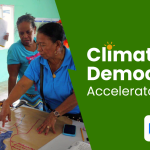Consolidated and compiled By Happy Tarumadevyanto | Independent Consultant | Environmental Asia | happy.devyanto@environmental.asia
Why are multiple approaches needed?
- Different sources of conflict: Conflicts can arise from various factors like scarce resources, differing goals, miscommunication, power imbalances, values clashes, or even personality differences. A “one-size-fits-all” approach rarely works.
- Varying stages of conflict: A latent conflict (unacknowledged tension) requires different interventions than a perceived conflict (awareness of the issue), a felt conflict (emotional involvement), or a manifest conflict (open dispute).
- Diverse stakeholders: As seen in natural resource management, conflicts often involve many parties with different interests, power dynamics, and communication styles.
- Desired outcomes: Sometimes the goal is a quick fix, other times it’s building long-term relationships or addressing root causes for sustainable solutions.
Common ways to resolve potential or latent conflicts:
- Early Intervention and Prevention:
- Proactive Communication: Establishing open, transparent, and regular two-way communication channels can prevent misunderstandings from escalating.
- Clear Expectations and Roles: Defining roles, responsibilities, and decision-making processes can reduce ambiguity that leads to conflict.
- Building Trust and Relationships: Investing in relationship-building among stakeholders fosters a more cooperative environment.
- Anticipatory Conflict Assessment: Identifying potential areas of disagreement before they become problematic.
- Communication-Focused Approaches:
- Active Listening: Genuinely understanding the other party’s perspective, feelings, and underlying interests (not just their stated position).
- “I” Statements: Expressing one’s own feelings and needs without blaming or accusing.
- Non-Violent Communication (NVC): A structured approach to expressing observations, feelings, needs, and requests without judgment.
- Dialogue Facilitation: Using a neutral third party to guide discussions and ensure all voices are heard respectfully.
- Collaborative Problem-Solving:
- Negotiation: Direct discussions between parties to reach a mutually acceptable agreement. This can involve various styles like compromising, accommodating, competing, or collaborating.
- Mediation: Involving a neutral third party (mediator) to facilitate communication, identify common ground, and help parties reach their own resolution. The mediator doesn’t make decisions.
- Consensus Building: A process aiming for broad agreement among all group members, often used in multi-stakeholder settings.
- Joint Fact-Finding: Agreeing on a common set of facts and data to inform discussions, reducing disputes over information itself.
- Structural and Systemic Changes:
- Policy Adjustments: Revising policies, regulations, or agreements to better address underlying issues or accommodate diverse needs.
- Resource Redistribution: Addressing inequities in access to resources, which can be a significant source of conflict.
- Capacity Building: Empowering marginalized groups with knowledge, skills, and resources to participate effectively in decision-making.
- Institutional Reform: Changing organizational structures or decision-making bodies to be more inclusive and responsive.
- Adjudicative Approaches (for escalated conflicts):
- Arbitration: A neutral third party hears both sides and makes a binding or non-binding decision.
- Litigation: Resolving the conflict through the legal system. (Often a last resort due to cost and potential damage to relationships).
The key is to select the most appropriate strategy (or combination of strategies) based on the specific context, the nature of the conflict, the relationship between the parties, and the desired outcome. Often, the earlier a potential conflict is identified and addressed with communication and collaboration, the higher the chance of a positive and sustainable resolution. Sources









